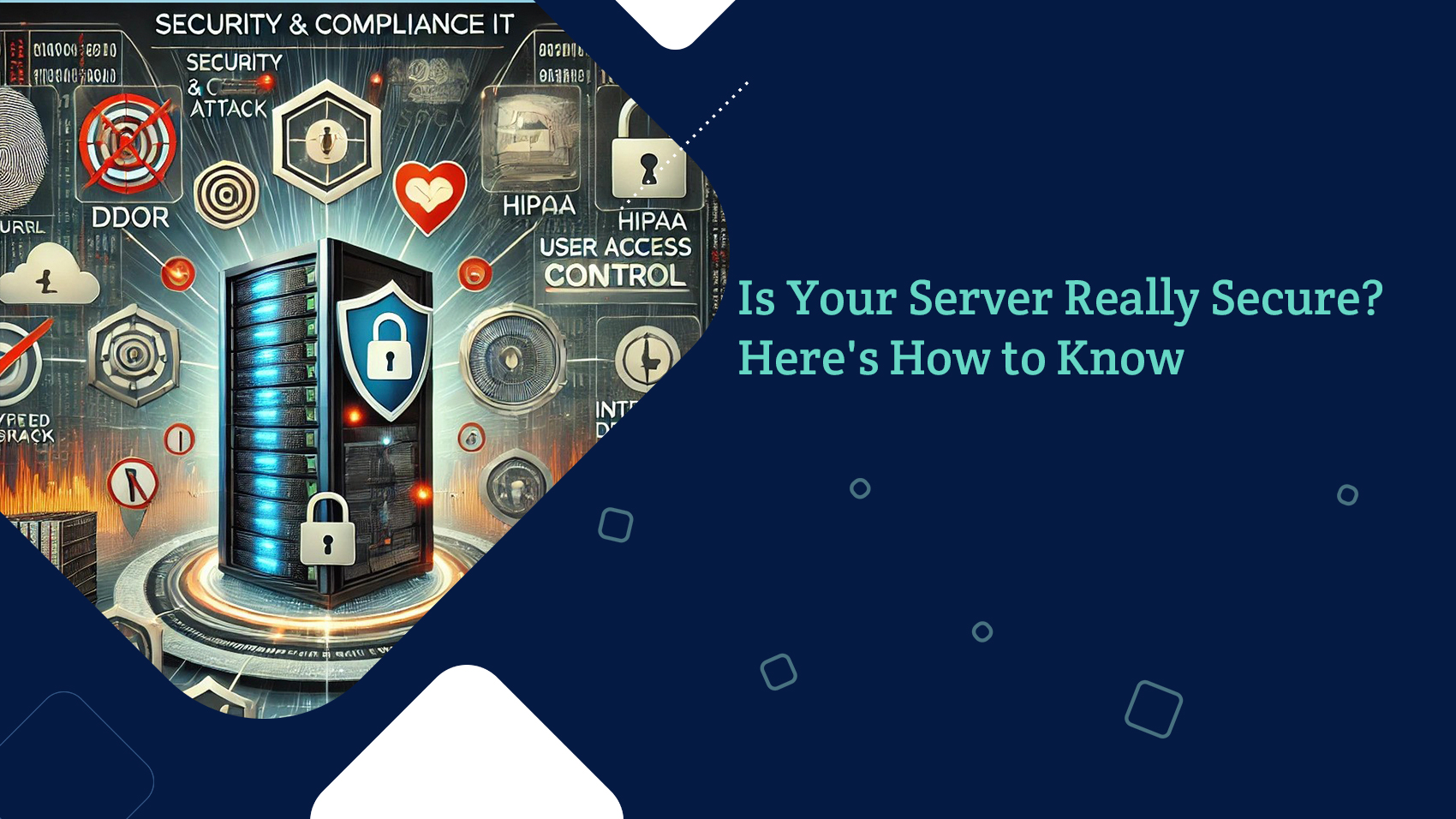No products in the cart.
 Server Security and Compliance
Server Security and Compliance
In today’s digital-first world, data breaches and cyber threats are more rampant than ever. As organizations store and process sensitive information, security and compliance are no longer optional—they are mission-critical. The consequences of poor cybersecurity range from data loss and financial penalties to severe reputational damage.
In this guide, we delve into the foundational elements of security and compliance, focusing on firewall and DDoS protection, data encryption and access control, compliance management (GDPR, HIPAA, SOC 2, etc.), and intrusion detection and response strategies. These elements are essential for building a robust and compliant IT infrastructure.
Firewall & DDoS Protection
Firewalls are the first line of defense in any cybersecurity framework. They serve as a protective barrier separating reliable internal networks from untrusted external networks. A well-configured firewall filters traffic based on defined rules and blocks malicious requests.
Types of Firewalls:
- Network Firewalls – Monitor and control traffic at the network layer.
- Application Firewalls – Focus on specific applications and services.
- Cloud Firewalls – Ideal for virtual environments and cloud-based services.
DDoS (Distributed Denial of Service) Protection
DDoS attacks overwhelm your servers with illegitimate traffic, causing downtime and disruption. Modern DDoS protection systems use traffic filtering, rate limiting, and behavioral analysis to mitigate attacks before they impact users.
Best Practices:
- Use layered security with both firewalls and DDoS mitigation tools.
- Employ real-time monitoring to detect anomalies.
- Integrate AI-driven traffic analysis for faster response.
Data Encryption & Access Control
Data Encryption
Encryption converts readable data into an unreadable format, accessible only with a decryption key. It’s essential for both data at rest (stored data) and data in transit (data moving between systems).
Common Encryption Protocols:
- AES (Advanced Encryption Standard) – Popular symmetric encryption method.
- TLS (Transport Layer Security) – Secures data in transit over the web.
- RSA – Popular for encrypting data using asymmetric key algorithms.
Access Control
Access control defines the individuals who are permitted to view or utilize resources. It can be role-based (RBAC), attribute-based (ABAC), or mandatory (MAC).
Best Practices:
- Implement least-privilege principles.
- Use multi-factor authentication (MFA).
- Regularly audit and update access permissions.
Compliance Management (GDPR, HIPAA, SOC 2, etc.)
Regulatory compliance ensures your organization adheres to legal and ethical data protection requirements.
Key Regulations:
- GDPR – European Union regulation focused on data privacy and protection.
- HIPAA – Protects patient data in healthcare institutions.
- SOC 2 – Guarantees that service providers protect data effectively.
Steps to Compliance:
- Conduct a compliance gap analysis.
- Implement security controls aligned with regulations.
- Regularly update policies and train employees.
- Maintain detailed documentation and logs.
Compliance isn’t a one-time task but an ongoing process. Regular audits and updates are vital for maintaining adherence.
Intrusion Detection & Response
Intrusion Detection Systems (IDS) monitor your systems for suspicious activity. They can be signature-based (detecting known threats) or anomaly-based (flagging unusual behavior).
Types of IDS:
- Network-based IDS (NIDS)
- Host-based IDS (HIDS)
Intrusion Response:
When an intrusion is detected, quick action is crucial. A well-prepared response plan includes:
- Alerting the security team.
- Isolating affected systems.
- Conducting forensic analysis.
- Reporting and recovery.
Advanced Techniques:
- Integration with SIEM tools.
- AI and machine learning for behavioral analytics.
- Automated remediation actions.
Conclusion
Cybersecurity and compliance are fundamental in safeguarding digital assets. By deploying firewalls and DDoS protection, encrypting data, enforcing access control, adhering to compliance frameworks, and establishing a solid intrusion detection and response strategy, your organization not only avoids costly breaches but also builds trust with clients and partners.
Stay proactive. Audit regularly. And always keep your defenses evolving as threats grow more sophisticated.
Connect with us on social media! Follow our Facebook, Twitter, and LinkedIn pages for the latest updates and exclusive content tailored for you.
Kindly take a look at our recent case study (Server Virtualization And Consolidation)



 Server Security and Compliance
Server Security and Compliance